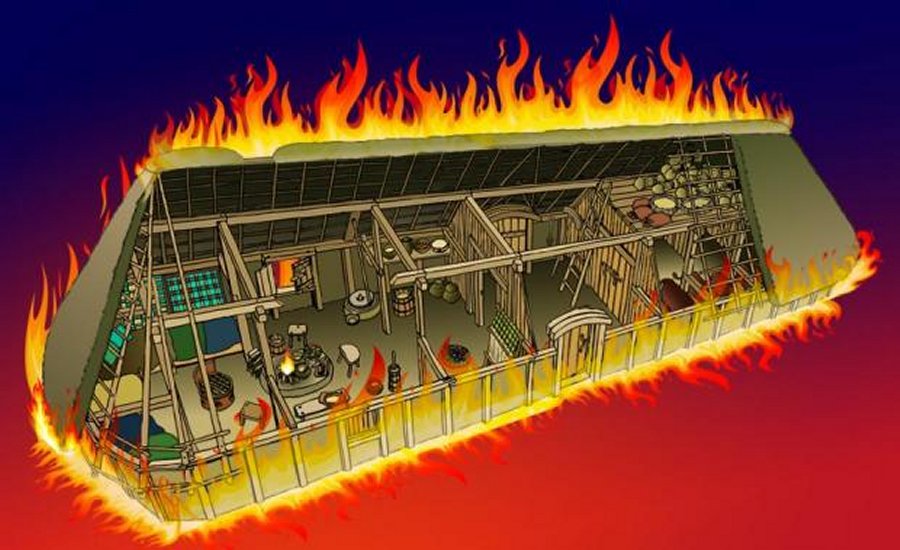MessageToEagle.com – Almost 2,000 years ago, a devastating fire destroyed this Iron Age home near Viborg in West Denmark.
Now, a team of archaeologists led by Mikkel Kieldsen, an archaeologist with Viborg Museum, Denmark, will try to shed some light on the history of this house and people who lived there.

Archaeologists do not know whether the house fire was an accident or if it was started deliberately. However, scorched layers of earth have protected the site for almost two millennia and will probably help to answers many questions.
“Virtually nothing survived,” said Mikkel Kieldsen, an archaeologist with Viborg Museum, Denmark.
“They would have had to leave everything behind as it was. We don’t know exactly what happened, but there’s no doubt that it was a catastrophe for the family who lived there.”

The traces of the burnt Viborg house were discovered accidentally.
“Six months ago, a boy came in with some shards of pottery that were clearly from the Iron Age. But there was no trace of fire on them, so we thought it was a grave in a field that had been ploughed,” said Kieldsen.
“But then last year, some shards showed up with traces of fire on them. So with that, we thought that it might come from the remnants of a house.”
The house – 18 meters long by 5.5 meters wide – was larger than the typical Iron Age home. Between seven and ten family members lived in the western part of the house and animals (goats or pigs) had smaller animal stalls, about 90 cm wide, in the eastern end of the house.
“There are no traces of burnt animals or people in the house, and we would’ve found them if they were there. If it was the summer, then the animals were probably out in the fields. If it was in winter, then perhaps they got them out,” Kieldsen explained.
The house probably burnt down during the summer, and the animals were the only thing that they managed to save.
“When you stand here, you come very close to the people who once lived in the house,” said Kieldsen.
“You can see precisely where their ceramics once stood with their contents. Next to the stone mortar there’s a container, which is now broken. They’ve stood and crushed ingredients in the stone and then placed it in the container, which then went into the fireplace,” he says.
“Without the fire, we couldn’t have seen these unique details. It preserved the house exactly as it was used in the Iron Age. The details bring us closer to the Iron Age interior and architecture.”
MessageToEagle.com
Expand for referencesReferences:






